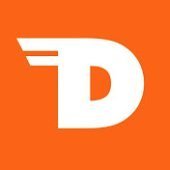-
Welcome to Auto Parts Forum
Whether you are a veteran automotive parts guru or just someone looking for some quick auto parts advice, register today and start a new topic in our forum. Registration is free and you can even sign up with social network platforms such as Facebook, X, and LinkedIn.
Minding Your P’s And Q’s
-
Similar Topics
-
By Max
We offer photo sets of spare parts for your online store (by manufacturer brands).
Good quality photos, no logos or watermarks. Resolution from 3Mpix.
HEPU ( Timing Belt Kit, Water Pump) - 957 images.
BOSCH (Brake Pads, Brake Shoes) - 1024 images.
GATES (Belts, Timing Kits, Water Hoses, Pulleys, Thermostats) - 2081 images.
ZIMMERMANN ( Brake Pads, Brake Shoes, Brake Discs, Brake Drums)
List of available photos IMAGES.xlsx
-
-
By Clifford Auto Parts
Your car’s control module is one of the most important components in ensuring a smooth and efficient ride. Whether it’s an Engine Control Module (ECM), Powertrain Control Module (PCM), or Transmission Control Module (TCM), these electronic units play a crucial role in regulating engine performance, fuel efficiency, and transmission behavior.
At Clifford Auto Parts, we specialize in providing OEM control modules that guarantee compatibility, reliability, and long-term performance. But how do you know when it’s time to replace your control module? Let’s break it down!
✅ What Is a Control Module and What Does It Do?
A control module is an onboard computer that processes data from various sensors in your car and makes real-time adjustments to optimize performance. Some of the most common control modules include:
✔️ Engine Control Module (ECM) – Controls ignition timing, fuel injection, and emissions.
✔️ Powertrain Control Module (PCM) – Manages both engine and transmission functions.
✔️ Transmission Control Module (TCM) – Regulates gear shifting and transmission efficiency.
✔️ Body Control Module (BCM) – Handles electrical functions such as lighting, locks, and windows.
When these modules start to fail, your car may experience serious performance issues that could lead to costly repairs.
✅ Signs of a Failing Control Module
If your control module is going bad, your car will usually give you warning signs. Here are the top indicators that it may be time for a replacement:
🚨 Check Engine Light Stays On
If your Check Engine Light won’t turn off even after repairs, it could be due to a failing ECM or PCM.
🚨 Poor Fuel Efficiency
A malfunctioning control module may send incorrect signals, leading to excess fuel consumption and reduced mileage.
🚨 Difficulty Starting the Car
If your car struggles to start, the ECM might not be properly managing the fuel and ignition system.
🚨 Transmission Issues
A faulty PCM or TCM can cause hard shifting, gear slipping, or delayed acceleration.
🚨 Engine Stalling or Misfiring
A failing ECM can result in irregular combustion cycles, leading to stalling, misfires, and sluggish performance.
🚨 Electrical Malfunctions
The BCM controls many electronic functions, so if your power windows, locks, or headlights start acting up, it may be time for a replacement.
✅ What Causes Control Modules to Fail?
Several factors can lead to a control module failure, including:
🔥 Water or Moisture Damage – Exposure to moisture can corrode internal circuits.
⚡ Voltage Surges – A faulty alternator or battery can overload the control module.
🔧 Worn-Out Components – Over time, electronic components degrade, leading to failure.
💥 Physical Damage – Accidents or engine overheating can cause module failure.
If you’re experiencing any of these issues, replacing your control module can prevent further damage and restore your vehicle’s performance.
✅ Why Choose an OEM Control Module Over Aftermarket?
When replacing a control module, you have two options: OEM (Original Equipment Manufacturer) or Aftermarket. Here’s why OEM control modules are the best choice:
✔️ Guaranteed Compatibility – Designed specifically for your vehicle’s make and model.
✔️ Pre-Programmed for Plug-and-Play Use – No extra programming needed.
✔️ Factory-Tested for Reliability – OEM parts undergo rigorous quality checks.
✔️ Maintains Vehicle Warranty – Aftermarket parts may void manufacturer warranties.
✔️ Longer Lifespan – OEM modules are built to last, unlike some aftermarket options.
✅ Why Buy OEM Control Modules from Clifford Auto Parts?
At Clifford Auto Parts, we provide high-quality OEM control modules at unbeatable prices. Here’s why thousands of vehicle owners trust us:
✔️ OEM-Grade Control Modules for Ford, Dodge, Jeep, and More
✔️ Pre-Programmed & Ready to Install – No Dealership Required
✔️ Lifetime Warranty on ECM, PCM, and TCM Replacements
✔️ Fast & Free Nationwide Shipping – Receive Your Part in 3 Business Days
✔️ Expert Customer Support to Help You Find the Right Module
🚗 Looking for a replacement control module? Shop now at link hidden, please login to view and get back on the road with confidence!
✅ How to Install Your New Control Module
1️⃣ Disconnect the Battery – Prevents electrical damage.
2️⃣ Locate the Module – Found under the hood, near the firewall, or in the cabin.
3️⃣ Remove the Old Module – Carefully disconnect all wiring and mounting bolts.
4️⃣ Install the New OEM Module – Secure it and reconnect wiring.
5️⃣ Test Your Vehicle – Start your car and check for warning lights or error codes.
📌 Need help finding the right part? Call (516) 494-7838 for expert assistance!
✅ Final Thoughts: Get the Right Control Module for Your Car
A failing control module can cause engine trouble, transmission problems, and electrical failures—but replacing it with an OEM module ensures long-term reliability, compatibility, and optimal performance.
🔧 Don’t let a bad control module ruin your driving experience! Get a high-quality replacement today at link hidden, please login to view 🔧
📞 Have questions? Call (516) 494-7838 for expert support.
🚀 Fast Shipping – Lifetime Warranty – 100% Customer Satisfaction! 🚀
-




Recommended Posts
Join the conversation
You can post now and register later. If you have an account, sign in now to post with your account.
Note: Your post will require moderator approval before it will be visible.